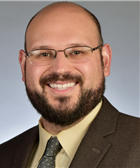Attention: Restrictions on use of AUA, AUAER, and UCF content in third party applications, including artificial intelligence technologies, such as large language models and generative AI.
You are prohibited from using or uploading content you accessed through this website into external applications, bots, software, or websites, including those using artificial intelligence technologies and infrastructure, including deep learning, machine learning and large language models and generative AI.
2024 AUA Data Research Program Recipients
Census Projects

Emily Huang, MD
Urology Resident, Houston Methodist Hospital
Co-Investigators: Kathleen Kobashi, MD, MBA, FACS
Project Title: Generation Gaps in the Urology Workforce: An Analysis of Intergenerational Differences in Demographics, Practice Characteristics, Integration of Technology, and Wellness
Dr. Huang and Dr. Kobashi will use the AUA Census data to investigate and analyze the differences in outlooks between urologists across generational cohorts on work-life balance, finances, technology, and work values. For the first time, there will be five generations of urologists working side by side: traditionalists (born 1928-1945), baby boomers (1946-1964), gen X (1965-1980), millennials (1981-1996), and gen Z (1997-2012). This study will aim to shed light on the evolving perspectives, motivations, and priorities of urologists from various generations, ultimately contributing to a deeper understanding of how generational differences may impact the field of urology.

Kevin Koo, MD, MPH, MPhil
Associate Professor, Mayo Clinic, Rochester, MN
Co-Investigators: Candace Granberg, MD; Gina Badalato, MD
Project Title: Longitudinal Assessment of Planned and Unplanned Workforce Attrition among Urologists and Urology Trainees
Dr. Koo, Dr. Granberg and Dr. Badalato will use the AUA Census data to study urologists’ shifting attitudes toward career duration and retirement age and the factors that influence planned and unplanned workforce attrition, at the individual and specialty levels. The growing need for urological care of an aging U.S. population has raised concerns about the size of the urology workforce. Several recent factors may have accelerated workforce attrition, including the COVID-19 pandemic, higher costs of practice, increased professional burnout, and rapid market consolidation. This study aims to characterize the planned and actual retirement age of urologists and urology trainees over the past decade, evaluate the impact of demographic, economic, and practice-related factors on retirement age, and finally assess individual-level changes in planned retirement age over time and across practice transitions.

Parth Modi, MD, MS
Assistant Professor, The University of Chicago
Co-Investigators: Susanne Quallich, PhD
Project Title: Advanced Practice Providers and Procedural Care in Urology
Dr. Modi and Dr. Quallich will use the AUA Census data to better understand the relationships between APP job characteristics, performance of urologic procedures, and job satisfaction or burnout. Advanced practice providers (APPs) are a rapidly growing portion of the urology workforce. In 2015, 63% of urologists worked with an APP, growing to 82% in 2022. Despite growth, there are no standard roles for APPs within urologic care teams. Prior work has shown APPs are increasingly performing independent procedures (e.g., cystoscopy, prostate biopsy). As job autonomy is an established predictor of job satisfaction for APPs, they hypothesize that independent performance of procedures is similarly valued by urologic APPs. This study will aim to identify features associated with APP performance of independent procedures and will examine relationships between an APP’s performance of procedures and outcomes influencing job satisfaction, including salary, incentives, and burnout.

Michael Rezaee, MD, MPH
Instructor, Johns Hopkins University School of Medicine
Co-Investigators: Christian Pavlovich, MD
Project Title: Examining Regional Variation in Prostate Biopsy Practices in the United States
Dr. Rezaee and Dr. Pavlovich will use the AUA Census data to characterize the use of different biopsy techniques and assess for regional variation in the uptake of these procedures across the U.S. The American Urological Association (AUA) and European Association of Urology (EAU) guidelines for proper prostate biopsy technique are dissimilar. The AUA does not take a firm stance on the recommended route of biopsy (transrectal or transperineal) or whether MRI-fusion methods should be prioritized. Alternatively, the EAU recommends transperineal over transrectal biopsy due to the lower associated infection risk and higher sensitivity for detecting prostate cancer. The EAU also recommends an MRI prior to biopsy and the use of MRI-fusion methods for any PI-RADS >= 3 lesions. The discordance between major guidelines can result in unwarranted variation and inconsistent practices amongst urologists. This study will evaluate urologist-specific factors that may impact the use of MRI-targeted and transperineal prostate biopsy.
AQUA Projects

Michelle Van Kuiken, MD
Associate Professor of Urology, University of California San Francisco School of Medicine
Project Title: Understanding Practice Patterns and Utilization of 3rd-Line Therapies for Overactive Bladder and Storage LUTS: Trends from the AUA AQUA Registry
Dr. Van Kuiken will use the AQUA Registry data to assess how factors such as insurance type, geographic location, and specific provider characteristics may impact patient access 3rd-line (or advanced) therapies for overactive bladder (OAB) in the U.S. Additionally, the study will focus on how men with OAB and storage LUTS progress through OAB pathway taking into account concomitant BPH diagnoses and treatment. Overactive bladder is a prevalent condition commonly encountered by urologists. Despite its prevalence, numerous studies have demonstrated low rates of utilization of 3rd line therapies, with even lower utilization rates in men. Investigating practice patterns of advanced OAB using the AQUA Registry aims to uncover important trends which could serve as targets for future study and interventions.

Kevin Michael Wymer, MD
Assistant Professor, Mayo Clinic, Rochester, MN
Co-Investigators: Mitchell Humphreys, MD; Kevin Koo, MD, MPH., MPhil; Aaron Potretzke, MD
Project Title: Management Patterns for Benign Prostatic Hyperplasia: Analysis of Patient and Provider Factors that Drive Treatment Selection in the United States
Dr. Wymer, Dr. Humphreys, Dr. Koo and Dr. Potretzke will use the AQUA Registry data to evaluate patient and provider factors impacting BPH surgical utilization. Overall, an estimated 2-5% of patients with BPH undergo surgical intervention and this represents one of the most common conditions treated by urologists. For surgical management, a multitude of ever-expanding treatment options exist- each associated with varying effectiveness, durability, and complication profiles. However, direct comparisons, specifically regarding durability, are limited to small trials. This study will aim to identify clinical predictors for undergoing surgical management of BPH, evaluate the role of demographic factors and resource availability on relative use and treatment selection for the surgical management of BPH, and to assess clinical and demographic factors in relation to BPH surgical durability.
Join Our Email List!
Sign up to receive information from the American Urological Association!
advertisement
advertisement
